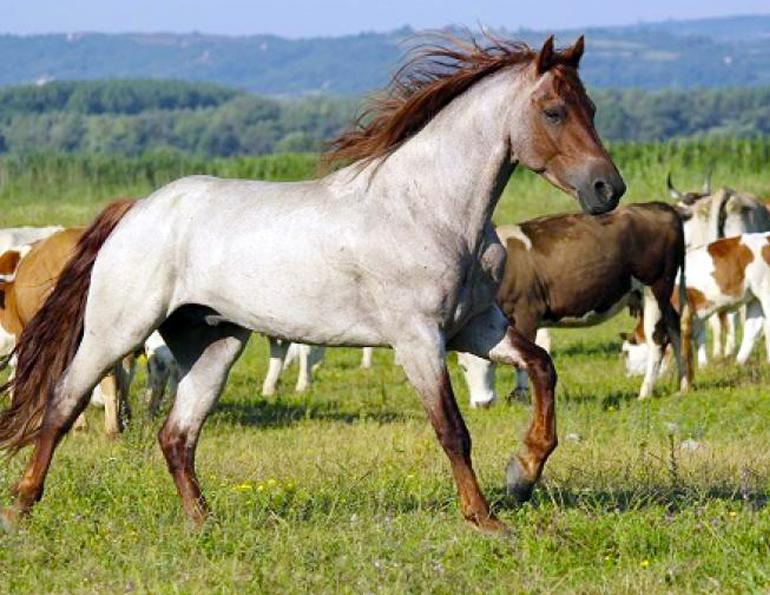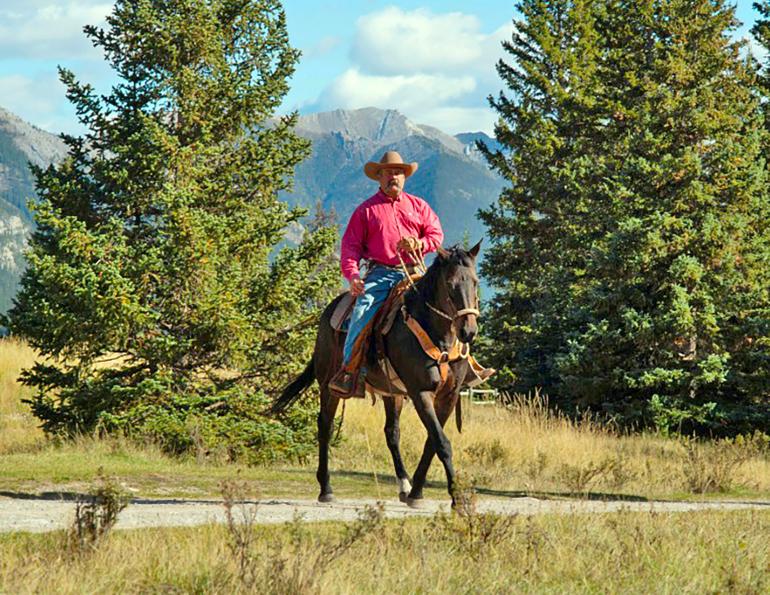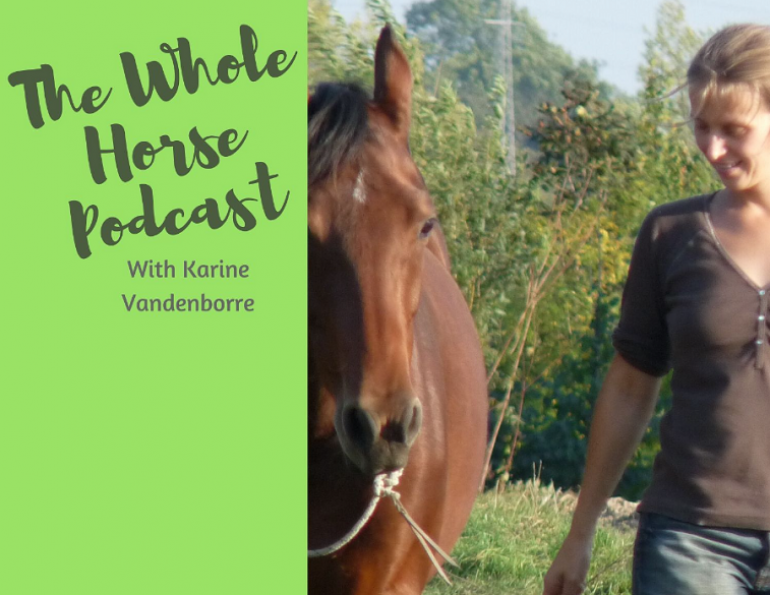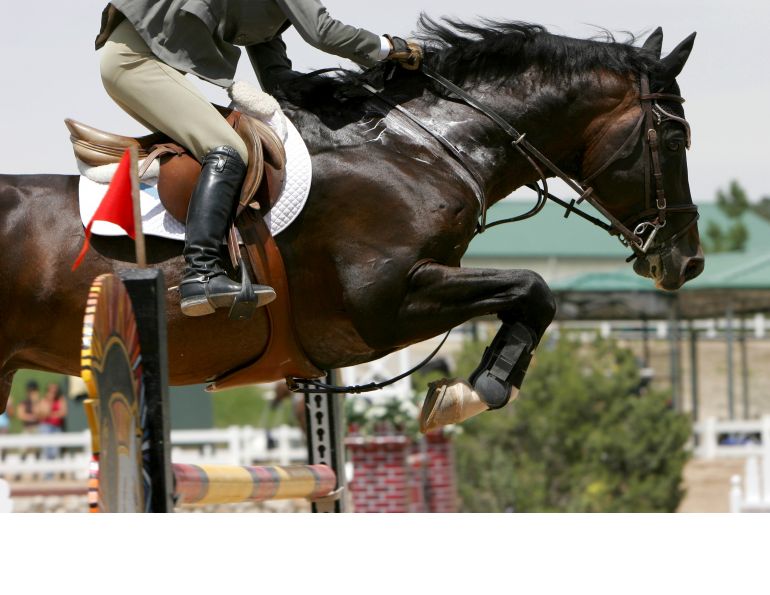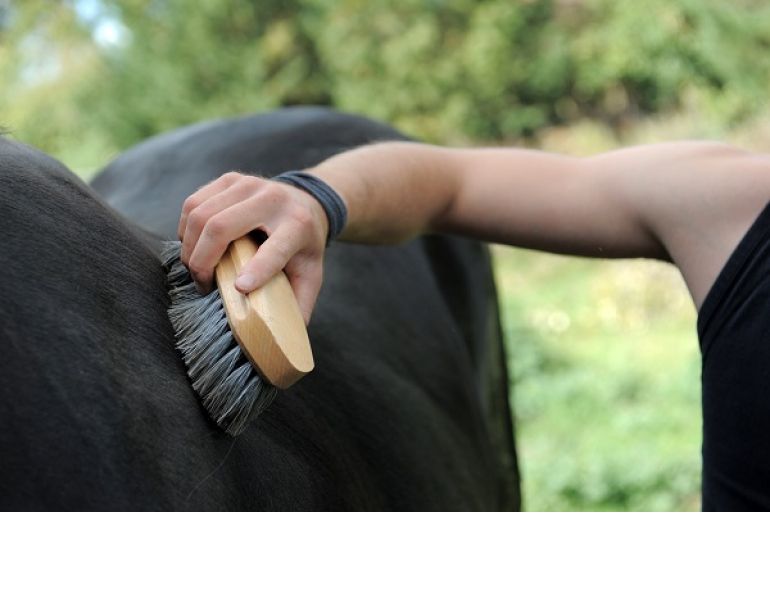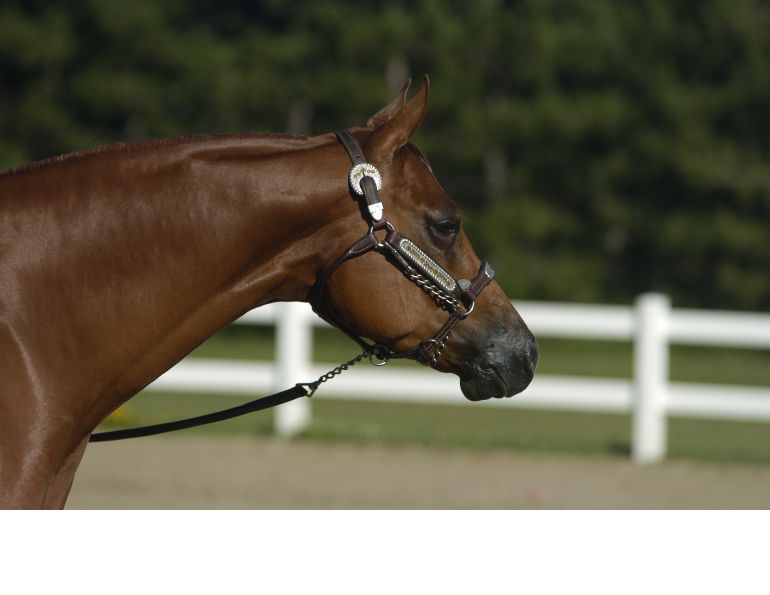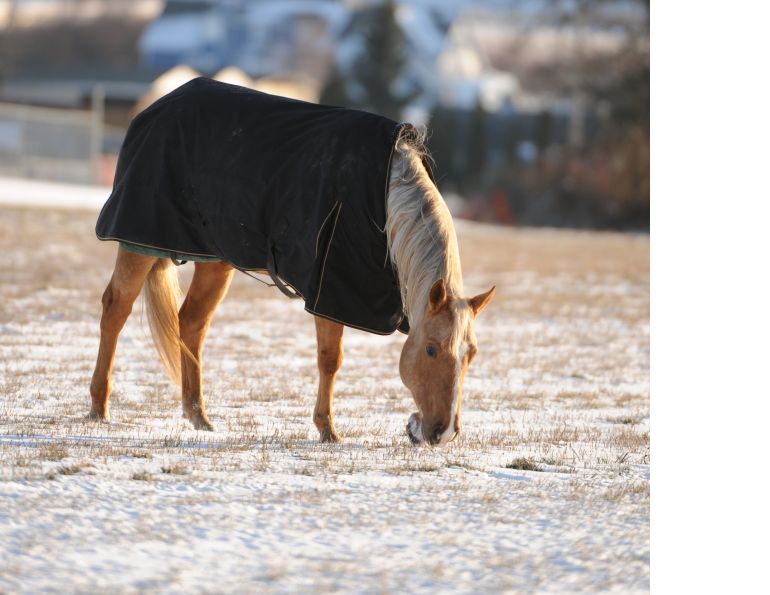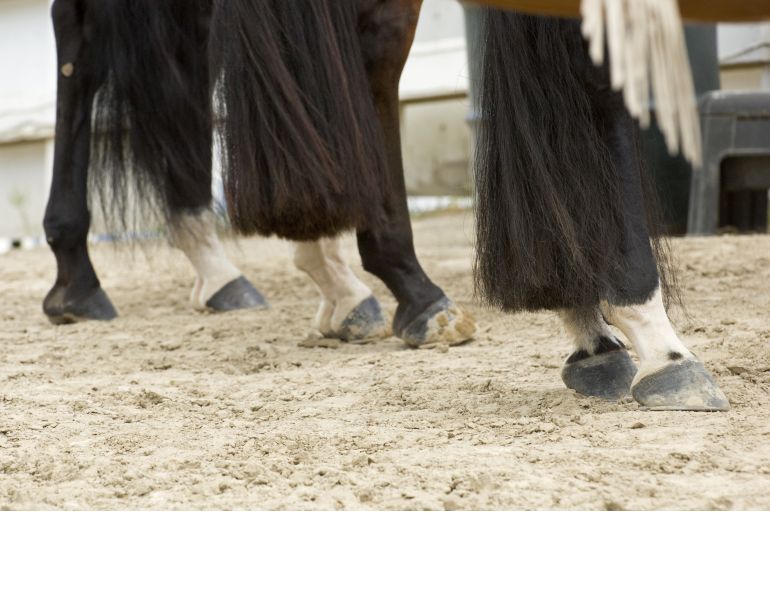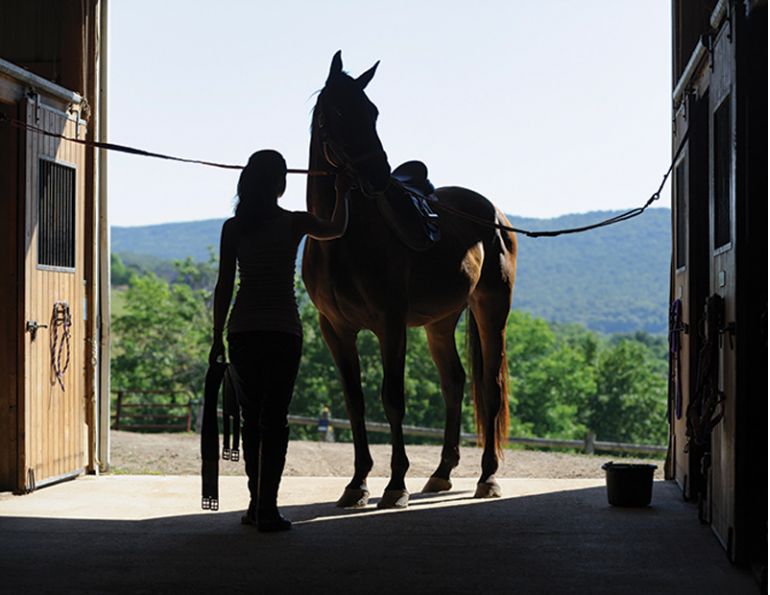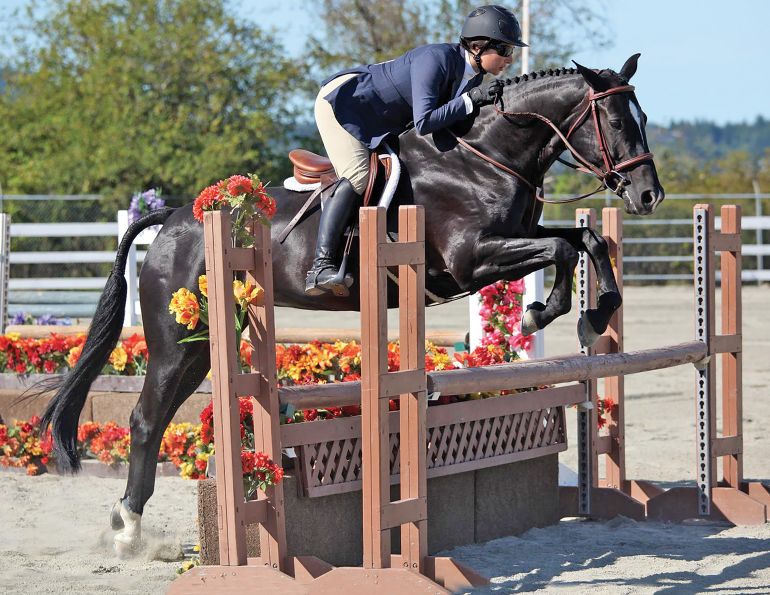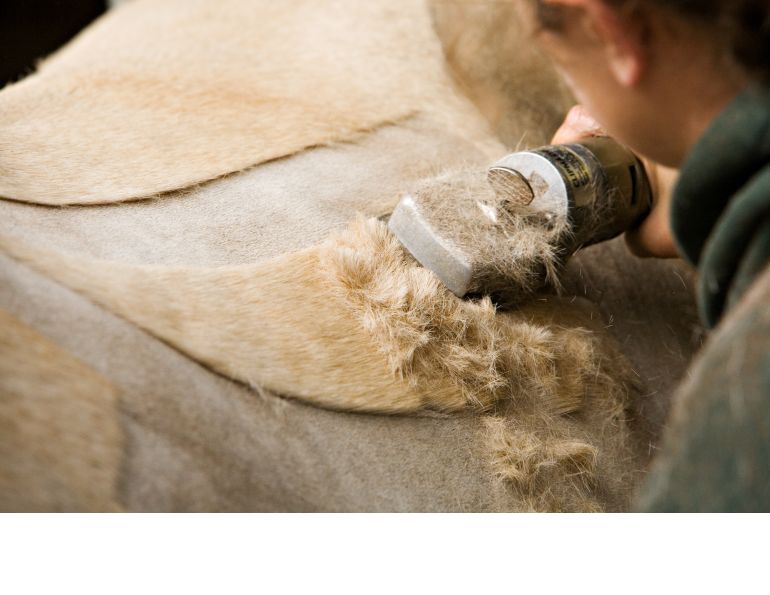By Dr. Tania Cubitt
Everyone wants to see their horses glowing from the inside out with a sleek coat – the quality of a horse’s hair coat is directly related to his overall health. Providing the horse with plenty of roughage and a balanced diet along with an effective parasite control regime, sufficient exercise, and grooming is imperative when striving for a healthy coat. Horse owners are frequently asking, “What can I feed to darken my horse’s coat or make him shinier?” In order to answer this question, we must first understand the basics of hair structure and the genetics of coat colour.
Hair Structure
Hair is a filamentous biomaterial that grows from follicles found in the dermis layer of the skin. Hair is primarily composed of protein, notably keratin. Hair growth begins inside the hair follicle. The only “living” portion of the hair is found in the follicle. The hair that is visible is the hair shaft, which exhibits no biochemical activity and is considered dead. The base of the root is called the bulb, which contains the cells that produce the hair shaft. Other structures of the hair follicle include the oil producing sebaceous gland which lubricates the hair, and the arrector pili muscles, which are responsible for causing hairs to stand up.
Coat Colour
There are many different coat colours possible, but all colours are produced by the action of only a few genes. The simplest genetic default colour of all domesticated horses can be described as either red or non-red, depending on whether a gene known as the Extension gene is present. When no other genes are active, a red horse is the colour popularly known as a chestnut. Black coat colour occurs when the Extension gene is present and no other genes are acting on coat colour. The Agouti gene can be recognized only in non-red horses; it determines whether black colour is uniform, creating a black horse, or limited to the extremities of the body, creating a bay horse.
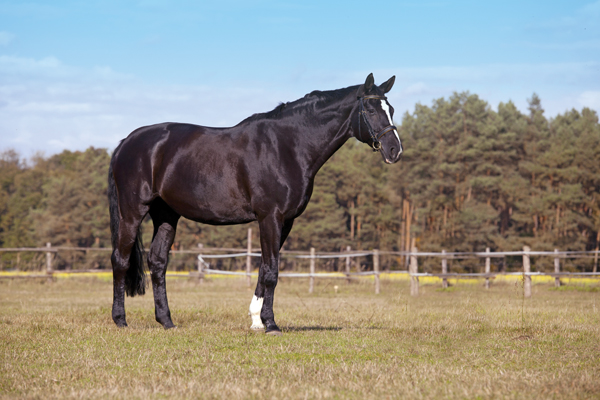
Photo (above): When the Extension gene is present and no other genes are acting on the coat colour, the horse will be black. Photo credit: ©CanStockPhoto/PurpleQueue
Chestnut, black, and bay are considered the three base colours that all remaining coat colour genes act upon. There are a number of dilution genes that lighten these three colours in a variety of ways, sometimes affecting skin and eyes as well as hair coat, including cream, dun, pearl, champagne, and silver dapple. The palomino colour, for example, is created by a single allele of a dilution gene called the cream gene working on a red (chestnut) base coat.

Photo (above): The three base colours that all remaining coat colour genes act upon are bay (shown), chestnut and black. Photo credit: ©CanStockPhoto/Virgonira
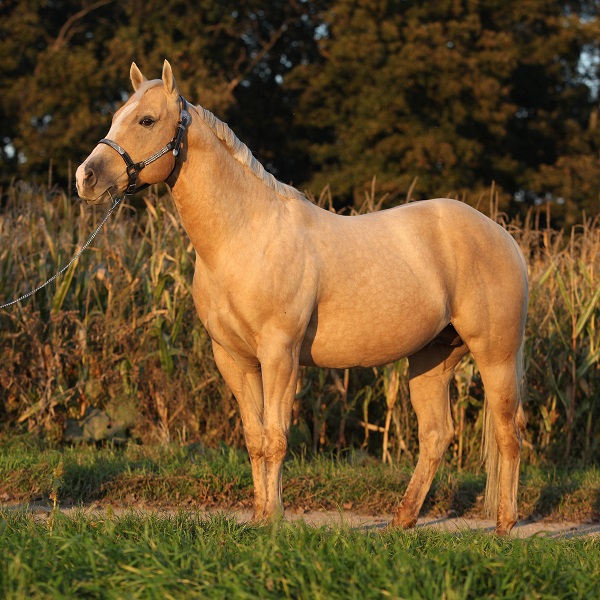
Photo (above): A single allele of a dilution gene called the cream gene working on a red (chestnut) base coat creates the palomino colour. Photo credit: ©CanStockPhoto
Genes that affect the distribution of white and pigmented coat, skin, and eye colour create patterns such as roan, pinto, leopard, white, and even white markings. Some of these patterns may be the result of a single gene; others may be influenced by multiple alleles. Finally, the grey gene, which acts differently from other coat colour genes, slowly lightens any other hair coat colour to white over a period of years, without changing skin or eye colour.
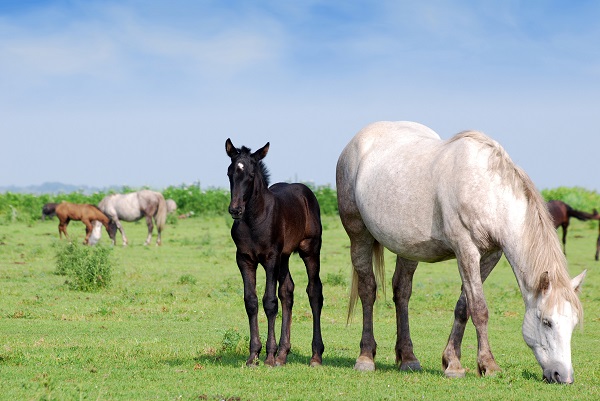
Photo (above): The grey gene will slowly lighten this foal’s coat to white over several years. Photo credit: ©CanStockPhoto/Goce
Sun Bleaching
Melanin is a pigment found in hair cells that gives each its colour. The sun bleaches and destroys the melanin in hair, making it lighter. Since hair is dead, the hair will stay that colour until new hair comes in. The UV in sunlight oxidizes melanin into a colourless compound; this is why hair gets lighter. Keeping a thin sheet on your horse during the sunniest periods of the day may reduce bleaching of your horse’s hair coat.
Nutrition and Coat Health
Firstly, it should be noted that the coat colour of a horse cannot be changed, unless it is chemically dyed or bleached by the sun, and for any nutrients to have an effect on the integrity of the hair, the feeding change must be implemented prior to the new coat starting to grow in.
That said, there are several nutrients that are known to be involved in the synthesis of the protein found in hair. Copper, zinc, biotin, fatty acids, and protein (specifically the amino acid methionine) are necessary for hair growth and structure. Copper and zinc are required for the manufacture of the melanocytes that give bays, blacks, and chestnuts their colour. Biotin is one of the B group vitamins. Most people have heard about using biotin to improve hoof quality, but this also applies to the coat, as insufficient biotin can lead to thin and brittle hair. Hair is primarily composed of protein once the water is removed. Insufficient protein intake can result in coats that do not lie smoothly, as well as brittle, slow growing coats.
Adding fat to the diet will supply essential fatty acids that are required by the hair follicle to lubricate the hair, which gives it a shiny appearance. When hair is newly grown the hair shaft has a good coating of oil (sebum), which makes for a high refractive index. This means light is captured and reflected inside the shaft giving the hairs a darker and shinier appearance. As the hair ages the natural oils wear off; by feeding a higher fat diet there is more oil available to coat the hairs resulting in a shinier, darker coat for longer.
Management and Coat Health
Exercise improves the delivery of blood, and therefore oxygen and nutrients, to the skin. In time, the number of blood vessels and the density of the capillaries supplying the skin actually increase so that nutrient flow is improved even when the horse isn’t exercising. Exercise is also beneficial by stimulating the flow of sweat and sebum. Sebum secreted from the hair follicles not only helps give the hair its shine, it forms a protective layer over the skin, preventing excess moisture loss and drying.
Deworming your horse is important as parasites can rob the body of nutrients, and hair and skin are often the first areas to show it. Also, groom your horse regularly as brushing will remove dirt, dead hair, and dead skin, in addition to stimulating blood flow to the hair follicles and feeding new hair growth.
Additional Supplements
The amino acid tyrosine is included in some coat products, primarily those designed for dark-coated horses. The rationale behind this is that tyrosine is the amino acid used to manufacture the pigment melanin. However, while the amounts used aren’t harmful, there’s no research to suggest that supplementing it is helpful either.
Paprika is the primary active ingredient added to most coat colour-enhancing supplements. Paprika is a spice made from ground, dried fruits of Capsicum annuum. Paprika contains many health related compounds such as vitamins A, C, and E. The lighter Hungarian variety of paprika also contains high concentrations of copper flavonoids. As copper is required for the manufacture of melanocytes that give bays, blacks, and chestnuts their colour, this is possibly why paprika may be beneficial. A word of caution: Paprika overuse has been shown to exacerbate gastric ulcers. Excess copper intake can also interfere with the absorption of selenium. Paprika also contains capcasin which is a banned substance and will result in positive drug tests. Capcasin is thought to have pain relieving properties and may cause hypersensitivity to touch in horses.
Remember, the skin and coat are the windows to your horse’s overall nutrition and health. Making sure the horse has plenty of roughage and a balanced diet will ensure the horse is healthier on the inside and glowing on the outside.
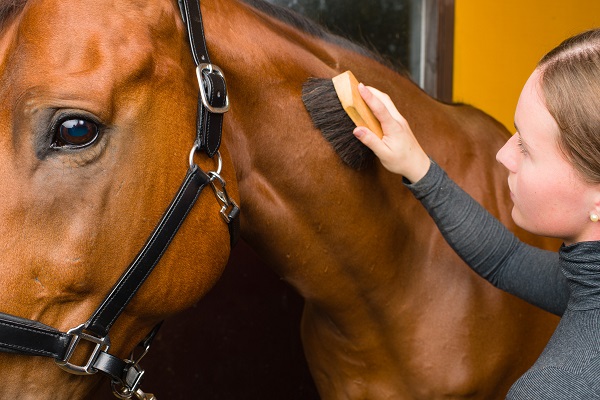
Photo (above): A balanced diet, exercise, and regular grooming contribute to a horse that glows with health from the inside out. Photo credit: ©CanStockPhoto//Jarih
This article was originally published in the March 2015 issue of Canadian Horse Journal.
Main Photo: Patterns such as roan are created by genes that affect the distribution of white and pigmented coat, skin, and eye colour. ©Thinkstock/Goce Risteski



